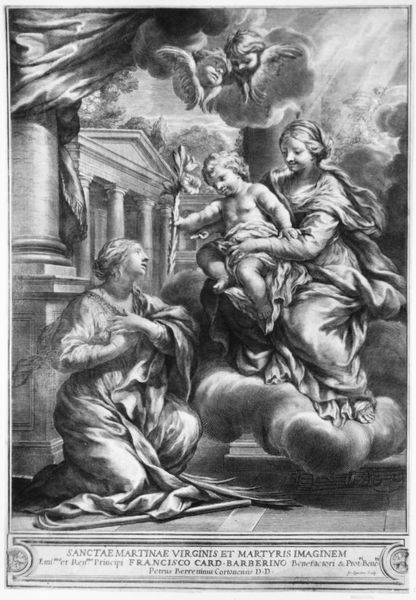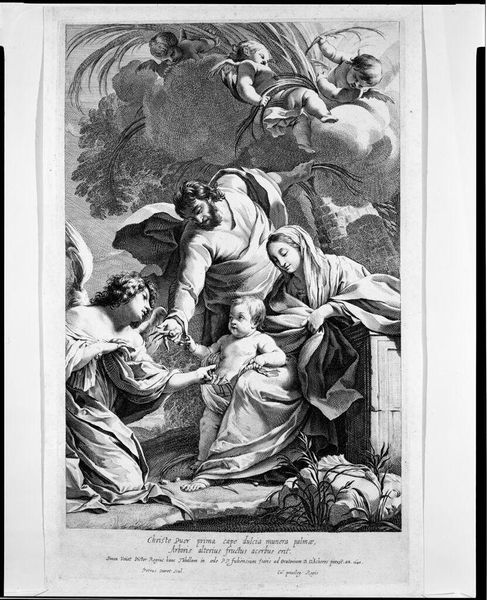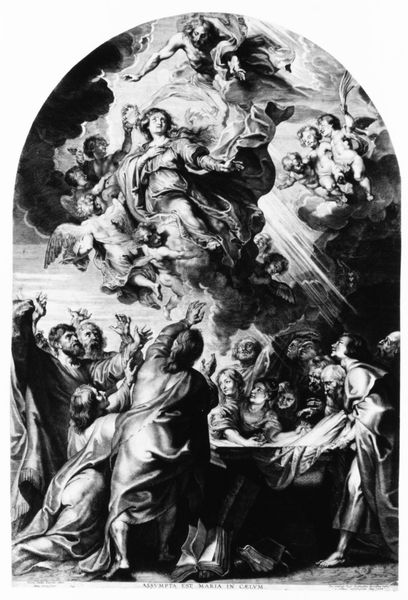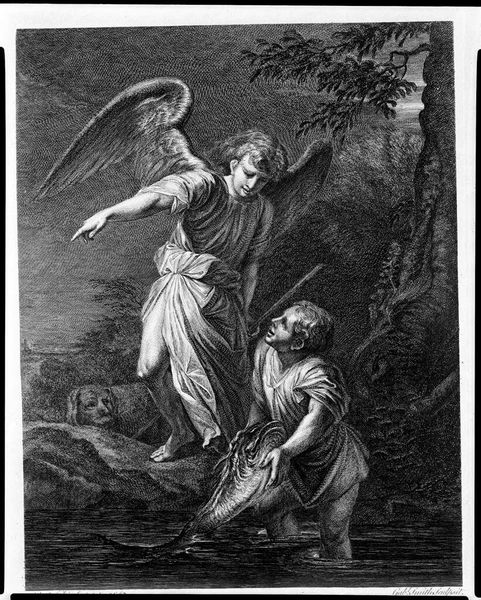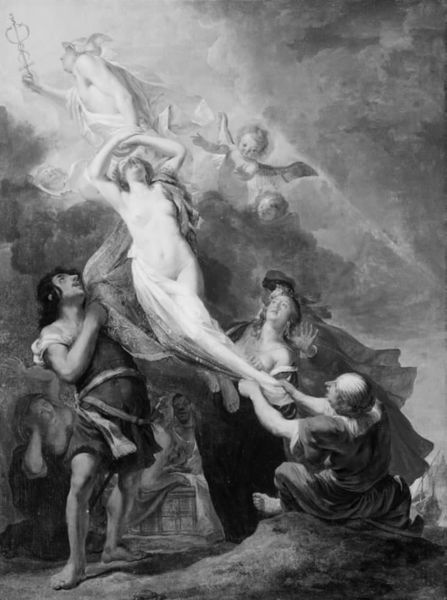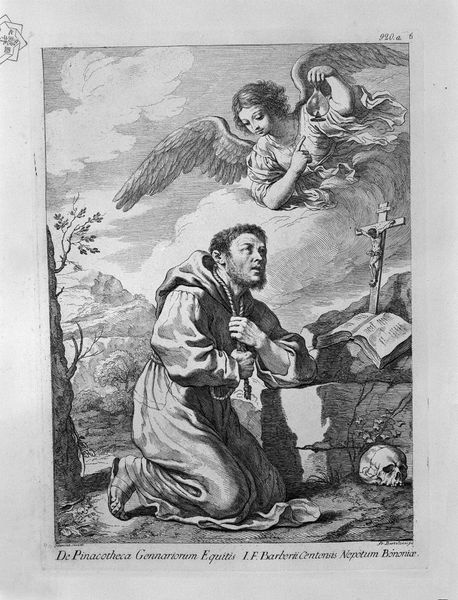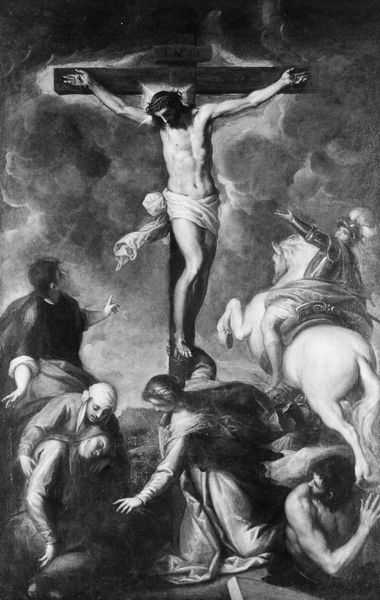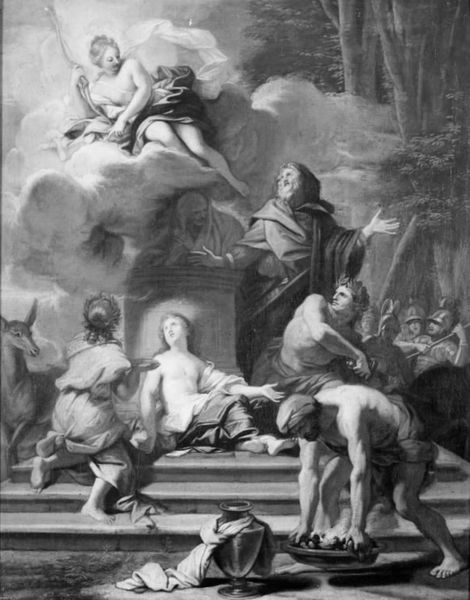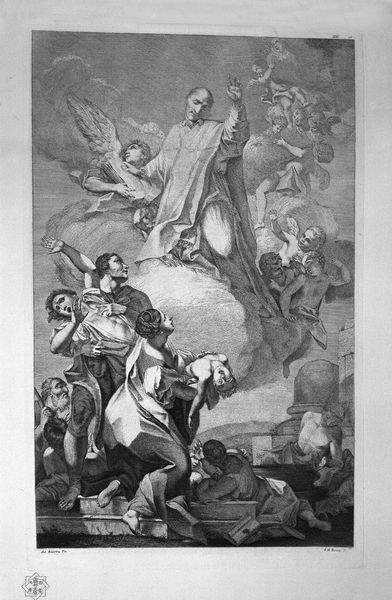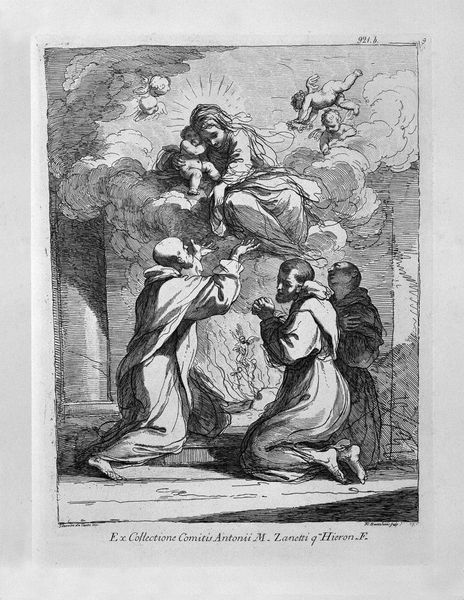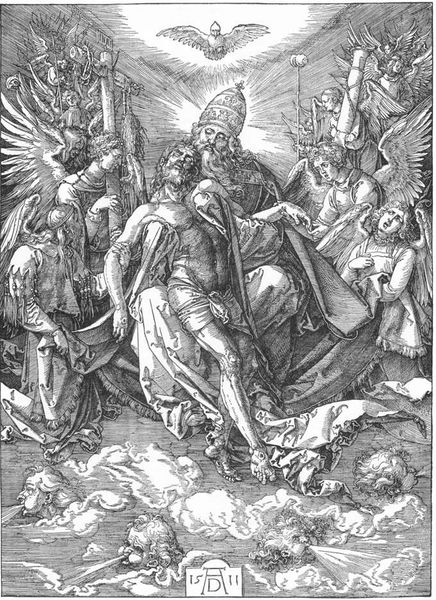
drawing, print, engraving
#
drawing
#
allegory
#
baroque
# print
#
charcoal drawing
#
figuration
#
line
#
history-painting
#
engraving
#
angel
Copyright: Public Domain
Curator: Before us is "The Sacrifice of Isaac," a print by Louis Desplaces, created sometime between 1695 and 1739. The engraving depicts a pivotal scene from the Book of Genesis. Editor: It strikes me immediately as incredibly dramatic. The stark contrast in blacks and whites intensifies the emotional turmoil of the moment. The texture seems meticulously rendered too. Curator: Desplaces masterfully employs line and shadow to create depth and tension. Notice how the angel's intervention, bursting into the scene, provides a visual release from the potential horror of Abraham's act. The lamb also appears. Its appearance carries forward a cultural narrative of intercession and renewal. Editor: Speaking of which, observe the material realities of the sacrificial act itself. The altar is built, implying immense labor. There’s even a source of heat in place. You have to think about the physical effort demanded to procure those specific elements for this devotion, like collecting materials and working those tools to build and execute God's request. Curator: Indeed. And from an iconographic viewpoint, Abraham’s averted gaze symbolizes his internal struggle. He is torn between divine command and paternal love. The image resonates across cultures as it encapsulates this pivotal test of faith. Editor: True, though the composition feels deliberately crafted to deliver a potent theological lesson rather than authentically portray Abraham’s real-world agonizing conflict. It seems purposefully rendered to sway faith by using tangible, observable textures and values. I notice, too, that much of the text at the base discusses how a 'divine parole' carries authority— Curator: But, as we unravel the artwork's layered meaning, "The Sacrifice of Isaac" becomes a powerful testament to obedience, redemption, and the enduring power of faith expressed in the visual culture. Editor: A remarkable image nonetheless. The artist and print maker did a skilled job in revealing and highlighting the devotion’s intended interpretation across faiths. It allows for many material observations, despite a seemingly allegorical artwork.
Comments
No comments
Be the first to comment and join the conversation on the ultimate creative platform.
